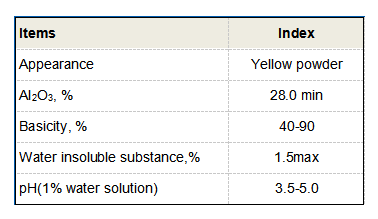Synthesis and Applications of Dry Polyacrylamide in Various Industries
Understanding Dry Polyacrylamide Structure, Applications, and Benefits
Dry polyacrylamide (PAM) is a versatile synthetic polymer that finds application in various industries, including agriculture, water treatment, and oil recovery. Characterized by its high molecular weight and water-absorbent properties, dry polyacrylamide plays a crucial role in enhancing the efficiency of numerous processes.
Chemical Structure and Properties
Polyacrylamide is produced through the polymerization of acrylamide, a colorless crystalline solid that dissolves readily in water. The result is a linear polymer that can be tailored to exhibit various properties, such as molecular weight and charge density, by modifying its chemical composition. The structure of polyacrylamide enables it to form a gel-like substance when dissolved in water, allowing it to absorb and retain large amounts of liquid.
The polymer can exist in several forms, including anionic, cationic, and nonionic variants. Anionic polyacrylamide contains negatively charged groups, making it suitable for applications where negatively charged particles are present. Conversely, cationic polyacrylamide carries a positive charge, allowing it to interact effectively with negatively charged materials. The nonionic type, lacking any charge, is employed in scenarios where the ionic charge is unnecessary or could lead to unwanted reactions.
Applications of Dry Polyacrylamide
1. Water Treatment One of the primary applications of dry polyacrylamide is in the water treatment industry. The polymer is used as a flocculant, aiding in the aggregation of suspended particles, which can then be easily removed from water. This process is critical for the purification of drinking water and the treatment of wastewater, where the reduction of turbidity is essential for environmental compliance.
dry polyacrylamide

2. Agriculture In agriculture, dry polyacrylamide is employed to improve soil structure and water retention. When applied to soil, the polymer helps retain moisture, reducing the need for frequent irrigation and minimizing soil erosion. This characteristic is particularly beneficial in arid regions where water scarcity is a significant challenge. Additionally, polyacrylamide supports the growth of crops by enhancing nutrient availability through improved soil aeration and structure.
3. Oil Recovery The oil and gas industry utilizes dry polyacrylamide in enhanced oil recovery (EOR) processes. By injecting polymer solutions into oil reservoirs, operators can increase oil recovery rates. The polymer modifies the viscosity of the injected water, helping it to move more efficiently through the reservoir and displace trapped oil, ultimately leading to higher yields.
4. Paper and Textile Industry Dry polyacrylamide is also used in the paper and textile industries as a binding agent and sizing agent. Its ability to improve the strength and quality of paper and textile products makes it a valuable additive in manufacturing processes.
Benefits of Using Dry Polyacrylamide
The use of dry polyacrylamide offers several benefits across its applications. Its exceptional water-soluble properties enable rapid dissolution and effective utilization in various formulations. Moreover, the polymer's adjustable properties (such as molecular weight and charge) allow for bespoke solutions tailored to specific industry needs. Additionally, the environmental impact of using dry polyacrylamide is generally favorable, as the polymer can be biodegradable under certain conditions, reducing its long-term footprint on ecosystems.
Conclusion
In summary, dry polyacrylamide is a highly functional polymer with diverse applications in multiple sectors. From enhancing water treatment processes and improving agricultural practices to facilitating oil recovery and aiding in manufacturing, its versatility and efficiency make it an invaluable resource. As industries continue to innovate and expand, the role of dry polyacrylamide is poised to grow, cementing its position as a critical tool for addressing various industrial challenges. Continued research and development will enhance its applications, leading to more sustainable and efficient practices across the board.
-
lk-319-special-scale-and-corrosion-inhibitor-for-steel-plants-advanced-solutions-for-industrial-water-systemsNewsAug.22,2025
-
flocculant-water-treatment-essential-chemical-solutions-for-purification-processesNewsAug.22,2025
-
isothiazolinones-versatile-microbial-control-agents-for-industrial-and-consumer-applicationsNewsAug.22,2025
-
scale-inhibitor-key-solutions-for-water-system-scale-preventionNewsAug.22,2025
-
organophosphonates-versatile-scale-inhibitors-for-industrial-water-systemsNewsAug.22,2025
-
scale-and-corrosion-inhibitor-essential-chemical-solutions-for-water-system-maintenanceNewsAug.22,2025





